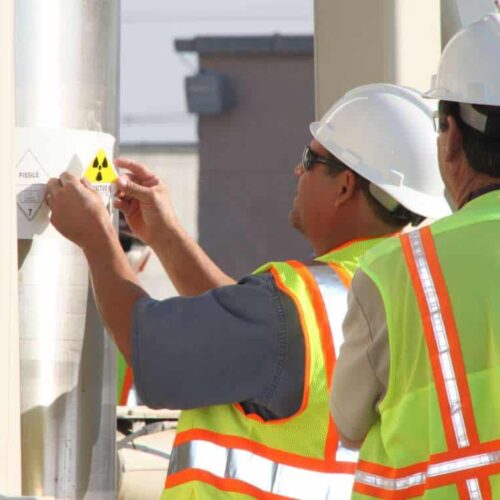Introduction
People who fell ill after working in the U.S. nuclear-weapons complex continued to struggle with a federal compensation program beset by confusing rules and incomplete records, according to the latest official assessment of the program.
Congress created the program after it became clear that the country’s nuclear-weapons effort routinely endangered workers’ health in the name of national security. In the nearly 16 years since the Energy Employees Occupational Illness Compensation Program Act passed, the program has been the frequent target of criticism — from former workers, survivors, advocates and elected officials who have tried to help people navigate the system.
A new report, released Friday, focuses on 2014 and comes from an ombudsman’s office created by Congress in 2004 to aid the program’s claimants. Every year the office’s staffers summarize the problems brought to their doorstep, and every year those problems are numerous.
“We receive complaints and grievances addressing practically every aspect of the … claims process,” the report says.
The program has helped tens of thousands of sick workers or their survivors, paying out more than $12 billion in compensation and health care since 2000 for illnesses ranging from cancer to debilitating lung diseases. But advocates who help claimants say it’s often a struggle to get approved, and many never manage it. Problems can also continue afterward, as people seek the medical care they’ve been promised.
A Center for Public Integrity investigation in December detailed some of the key difficulties for ex-workers trying to get accepted into the program, including disputes over the level of their toxic exposures at top-secret facilities where records of those exposures — if they existed at all — were sometimes lost, destroyed or falsified. That issue was covered in the ombudsman’s report.
“Since Congress recognized that there were unmonitored exposures and other continuing problems, claimants question the deference that ought to be accorded to the records maintained by these facilities,” the report says.
The program is run by the U.S. Department of Labor, which declined to comment on the report because it is preparing a formal response, due to Congress July 6. But earlier, the agency’s Division of Energy Employees Occupational Illness Compensation said it follows the rules and noted that the program was never intended to compensate all the ex-workers who fell ill. Approvals are higher than what was initially expected, the division says.
“We have to evaluate the likelihood that this cancer is due to work or not due to work, and … there [are] always going to be people that are going to get an answer that they don’t want to hear,” John Vance, the program’s policy chief, said last year. “It’s the perfect intersection of politics, science, human emotion and all of that. It’s a difficult, difficult situation.”
Among the other issues the report highlighted:
- Hard-to-find information. The Labor Department issues bulletins, circulars and other documents that explain aspects of the program and dictate policy. The ombudsman’s office heard from people who relied on the information in one document, “only to later discover that their claim is impacted by a relevant discussion of the same issue found in another document.” They found it “particularly frustrating” that the document they relied on made no mention of the other one.
- Inconsistencies. The program says in writing that scientific studies about the effects of a substance on animals can be helpful in some cases, given that certain “chemicals used in the production of nuclear weapons are so unique and exotic that no broad-based studies of their health effects exist.” But a man who submitted animal-exposure evidence told the ombudsman’s office that program officers denied his claim, eventually explaining that “we generally do not recognize data obtained from animal studies.”
- Lack of assistance. Claimants told the office that no one at the agency explained to them that, for instance, they can look at an online database of exposure information by facility and job to help them pull together the evidence they need. Claimants also said program information “is sometimes worded using legal, scientific, and/or medical terminology that is difficult to understand.”
- Post-approval problems. The ombudsman received calls from people with approved claims who ran into issues with their medical care. For instance, “we were made aware of instances where oxygen providers terminated service to claimants” because of Labor Department billing issues. Some doctors also refused to continue providing services “because they felt that this program required too much paperwork.”
Terrie Barrie, a founding member of the Alliance of Nuclear Worker Advocacy Groups, whose husband worked at the Rocky Flats site in Colorado, called the report “an honest and accurate account of the problems the claimants encounter with the program.” She was particularly glad to see it note that the law requires the Labor Department to help people with their claims.
“It is incongruent for [the department] to require the claimants to provide evidence for each and every step of the claims process and not provide that evidence they have in their possession to the claimants,” Barrie wrote in an email. “This program … is supposed to be claimant-friendly and non-adversarial.”
Read more in Inequality, Opportunity and Poverty
Unequal Risk
Some paint strippers are killing people. The EPA promised to act — but hasn’t.
For now, the only ones yanking methylene chloride paint removers off the shelves are retailers.


Join the conversation
Show Comments